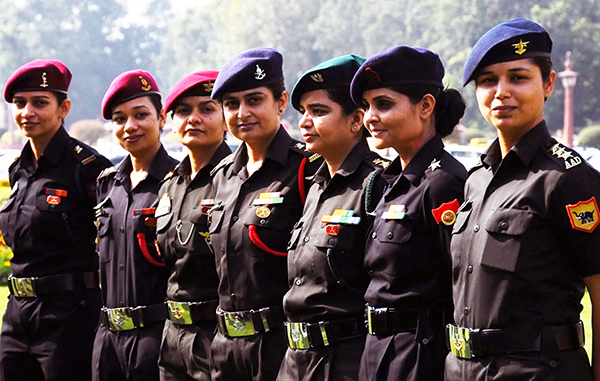As many as 108 women officers in the Army are set to be cleared for the rank of Colonel (selection grade) by January 22 by a special selection board, which will make them eligible to command units and troops in their respective arms and services for the first time.
A total of 244 women officers are being considered for promotion against the vacancies — from the batch of 1992 to 2006 — in arms and services including Engineers, Signals, Army Air Defence, Intelligence Corps, Army Service Corps, Army Ordnance Corps and Electrical and Mechanical Engineers.
Until 19 January, 80 women officers had been cleared for the rank of Colonel from Lieutenant Colonel by the Special No. 3 Selection Board whose proceedings began on January 9.
Unlike other promotion boards, this one is being held every day for a particular batch, starting with the 1992 batch, and the results are being declared on the same day.
This clearance grants women officers parity with their male counterparts. Earlier, with a limited period career in the force, there were no promotion avenues for women officers to become a Colonel and command a unit like male Army officers.
It is not that women officers did not reach the rank of Colonel or beyond in the past, but they were only in two branches — the Judge Advocate General (JAG) branch and the Army Education Corps — where they were granted permanent commission in 2008.
However, these were staff appointments — which are more administrative in nature — and not purely command appointments in which an officer commands troops on ground.
The Supreme Court’s order to grant permanent commission to women Army officers in February 2020 opened the doors for promotion to women officers across all streams of the Army, except pure combat arms. With a longer career in the Army, women officers will be considered for promotions, including to the rank of Colonel and beyond.
Why did it take so long?
An officer in the Army is promoted to the rank of Colonel only after serving between 16 and 18 years, based on certain criteria such as annual confidential reports and various courses.
Women officers who were inducted into the Army were inducted as Short Service Commission (SSC) officers in 1992 and in the years after did not have the choice to opt for permanent commission. JAG and Army Education Corps were exceptions, where a permanent commission was opened for them in 2008.
For other arms and services, women could not become permanent cadre, and had to retire much before they completed the service period that is mandatory to become a Colonel.
Supreme Court order of 2020
In 2019, the Army changed its rules allowing SSC women officers to opt for permanent commission who would have otherwise retired after 14 years of service. However, this was not retrospective, and applied only to the batches of women officers starting their career in the Army in 2020.
With the landmark Supreme Court judgment of February 2020, permanent commission was granted to women officers with retrospective effect. This opened the doors for their further growth and promotions in the Army, which has been of late opening leadership and higher management courses for women.
Commanding of a unit
Once promoted to a Colonel, an officer is eligible to command troops directly in the Army, which is an acknowledgment of the leadership qualities of the officer. It is considered a coveted appointment because in no other rank — including higher ranks like Brigadier or Major General — does an officer interact directly with troops on the ground.
Multiple women officers told The Indian Express that for them it was a dream to reach this point in their career. Despite working at the grassroots level as junior officers, women officers hitherto did not get an opportunity to prove their leadership skills as they were not eligible to command a unit. For a woman officer, this is an empowering move.
Arms and Services A ffected
Women officers in many streams of the Army, including the Army Air Defence, Signals, Engineers, Army Aviation, Electronics and Mechanical Engineers, Army Service Corps, Army Ordnance Corps, and Intelligence Corps will be commanding units.
They are still not eligible in core combat arms such as Infantry, Mechanised Infantry and Armoured Corps, as the Army is not open to women fighting wars at the borders as foot soldiers. Much of this resistance stems from past instances of male soldiers being taken as prisoners of war and tortured by the enemy.
However, the Army has recently decided to open the Corps of Artillery, a combat support arm, to women.
Indian Navy and the Indian Air Force
Women officers have been inducted into all branches of the Navy, and they will be eligible for permanent commission in the future. Women officers can command shore-based units and, as they join the service and become eligible for permanent commission, they would be able to command ships and air squadrons.
The IAF has opened all branches for women officers, including the fighter stream and the new weapon systems branch. As they are granted permanent commission based on eligibility and vacancies, they will be eligible to command units in the future.
The Army, being the largest of the three services, has the largest number of women officers at 1,705, followed by 1,640 women officers in the IAF, and 559 in the Navy. This data was submitted by the government to Parliament last year.

















